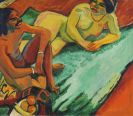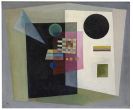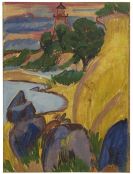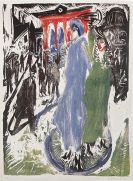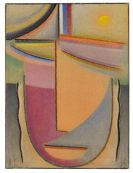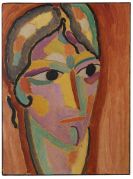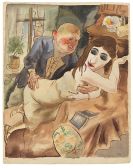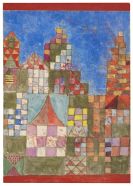
Otto Pankok
Mülheim/Ruhr
1893 -
Wesel
1966
The printmaker and sculptor Otto Pankok began training as an artist in 1912 when he spent several months studying at the art academies in Düsseldorf and Weimar, where he was taught by Fritz Mackensen and Albin Egger-Lienz.
Pankok interrupted these studies to learn autodidactically at Dötlingen/Oldenburg. From there he went on a two months' trip to Paris, where he attended the "Academie russe" and the "Academie de la grande Chaumière". Otto Pankok was conscripted in 1914 and long stays in hopitals and sanatorias followed until he was discharged in 1918. After the war, he traveled to Berlin and East Frisia repeatedly before he settled in Düsseldof, where he joined the Avant-garde artists' group "Junges Rheinland" just like Gert Wollheim.
Later he worked in the circle of the "Neue Kunst Frau Ey" gallery together with Otto Dix trying to find a contemporary and truthful language of art. From 1922 he traveled to Italy, Southern France, Spain and Holland. During these travels, Pankok repeatedly captured his motif of choice: the degraded and suffering.
In 1931 Pankok devoted himself more intensively to sculpture. Impressed by the itinerant life led by Roma and Sinti, Pankok embarked on a cycle of drawings featuring Gypsy motifs, followed by "Die Passion", comprising sixty drawings.
Even when the Nazis began to defame him in 1936 and confiscated many of his works as "degenerate", Otto Pankok also remained faithful to these themes in his prints. He continued to work illegally, while he was living in Gildehaus, at the Bourtanger Moor and in Emsland but he kept most of his pictures hidden near Soest.
Pankok, who was in the Eifel at the end of World War II, moved back to Düsselforf in 1946, where he began to teach a drawing class at the art academy a year later and continued to do so until 1958.
During this time Pankok frequently traveled to France and Yugoslavia. After he finished teaching, the artist moved to "Haus Esselt" at Drevenack on the Lower Rhine, where he again began to work intensively with woodcarvings.
He died in Wesel in 1966. Today "Haus Esselt" houses the Otto Pankok Museum. Pankok's work reveals the influence of van Gogh, whom he revered, and its main theme is the depiction of the suffering and suppressed. Expressionism informs his line and palette stylistically.
Would you like to sell a work by Otto Pankok?
Infos for seller
